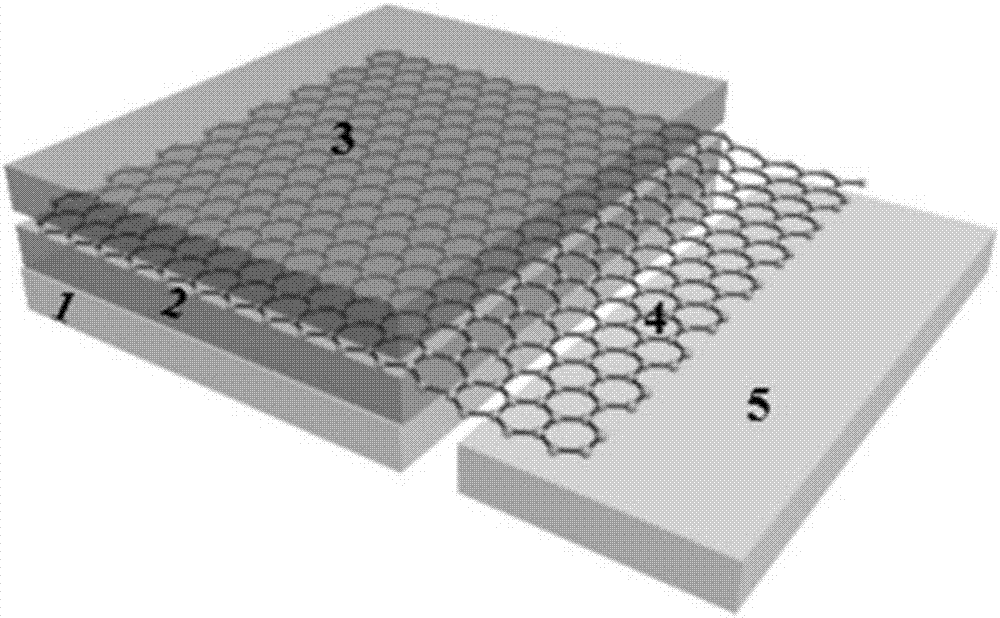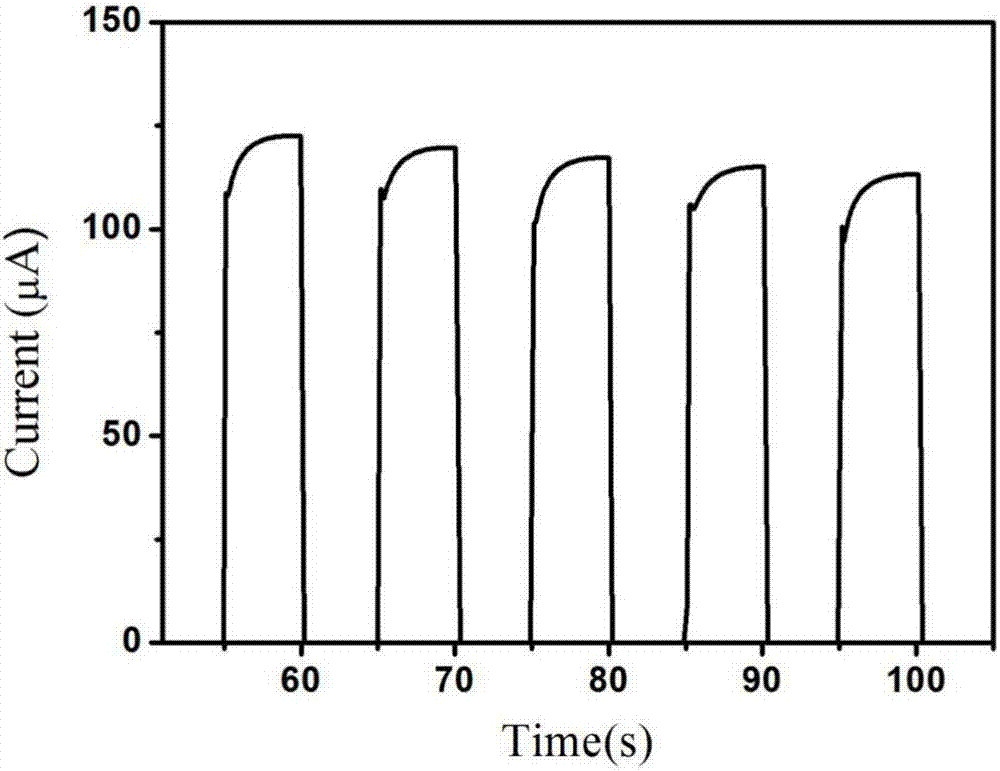Self-driven photoelectric detector based on graphene electrode and perovskite light absorption layer and preparation method thereof
A graphene electrode and photodetector technology, applied in the field of photoelectric detection, can solve the problems of long response time of photoconductive photodetector, low responsivity of Schottky photodetector, etc. Thermal conductivity, quick recovery effect
- Summary
- Abstract
- Description
- Claims
- Application Information
AI Technical Summary
Problems solved by technology
Method used
Image
Examples
example 1
[0031] The preparation method of the self-driven photodetector based on the graphene electrode and the perovskite light-absorbing layer of the present invention comprises the following steps.
[0032] Step 1: Substrate pretreatment.
[0033] (1) Based on FTO transparent conductive glass (2.5 cm × 2.5 cm), use zinc powder and dilute hydrochloric acid to etch FTO into two independent electrodes, the first conductive glass electrode 1 and the second conductive glass electrode 5, and the middle groove The track width is 2 mm. Dilute hydrochloric acid is formed by mixing 1 volume mass fraction of 38% concentrated hydrochloric acid and 4 volumes of water.
[0034] (2) ultrasonically clean the etched FTO conductive glass successively in acetone, isopropanol and ethanol for 5 minutes, and then blow dry with nitrogen;
[0035] Step 2: preparing an electron transport layer.
[0036] (1) Deposit a layer of TiO on the surface of the first conductive glass electrode 1 at the end of the ...
example 2
[0048] In this example, the hole transport layer is spin-coated on the pure iodine perovskite absorber layer, and its material is PTAA (poly[bis(4-phenyl)(2,4,6-trimethylphenyl)amine]) poly[bis( 4-phenyl) (2,4,6-trimethylphenyl) amine], other steps are identical with example 1, the light of the prepared self-driven perovskite photodetector under 560nm, 30mW optical power pulse light source Current change graph as Figure 4 As shown, the photoresponse switch ratio can reach 79800.
example 3
[0050] In this example, chloroiodide perovskite CH was spin-coated on the transferred substrate containing graphene electrodes. 3 NH 3 PB 3-x Cl x Absorbing layer, other steps are the same as Example 1, and the photoresponse switching ratio of the prepared self-driven perovskite photodetector can reach 65,000 under the condition of 560nm pulse light source and 30mW optical power.
PUM
 Login to View More
Login to View More Abstract
Description
Claims
Application Information
 Login to View More
Login to View More - R&D
- Intellectual Property
- Life Sciences
- Materials
- Tech Scout
- Unparalleled Data Quality
- Higher Quality Content
- 60% Fewer Hallucinations
Browse by: Latest US Patents, China's latest patents, Technical Efficacy Thesaurus, Application Domain, Technology Topic, Popular Technical Reports.
© 2025 PatSnap. All rights reserved.Legal|Privacy policy|Modern Slavery Act Transparency Statement|Sitemap|About US| Contact US: help@patsnap.com



